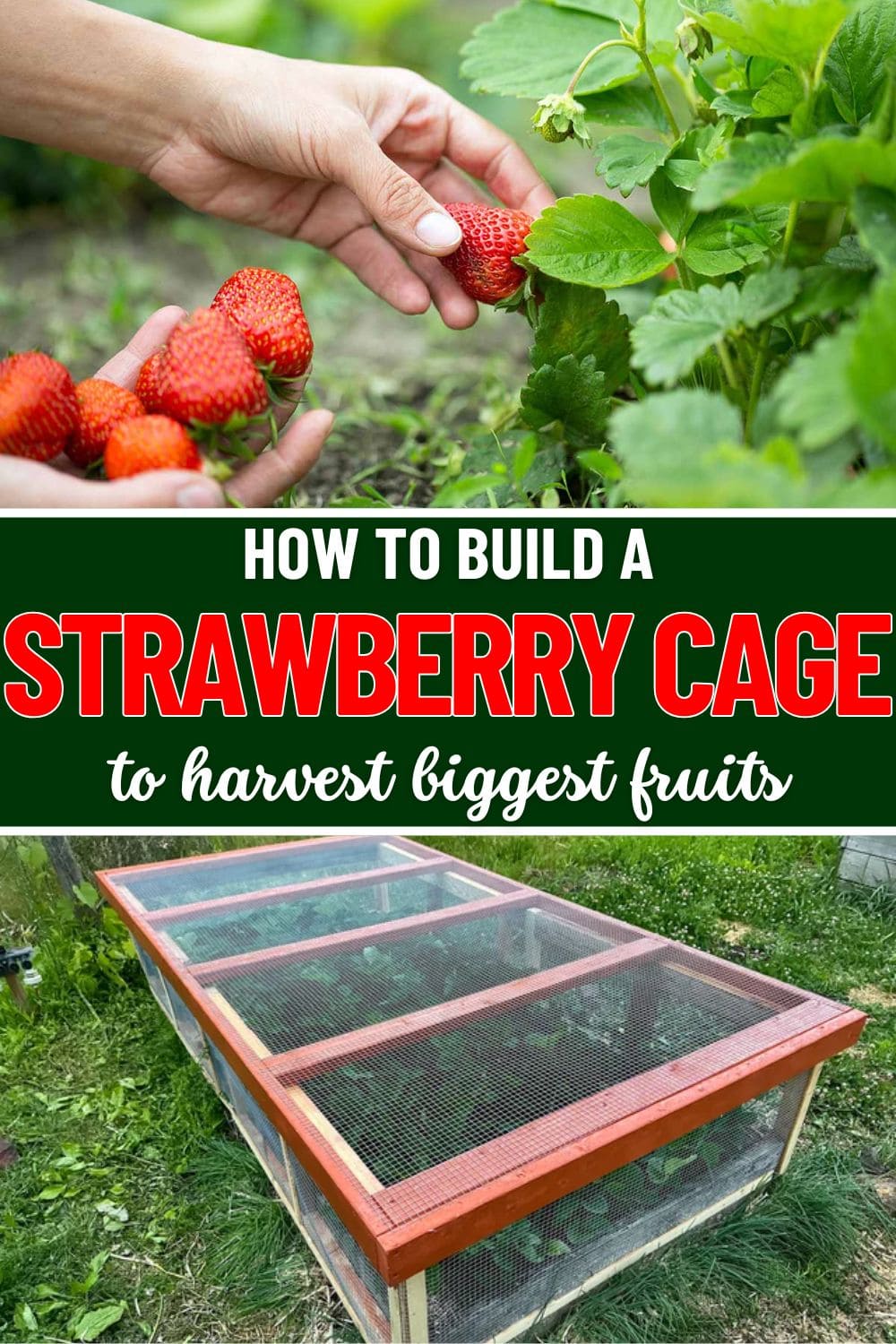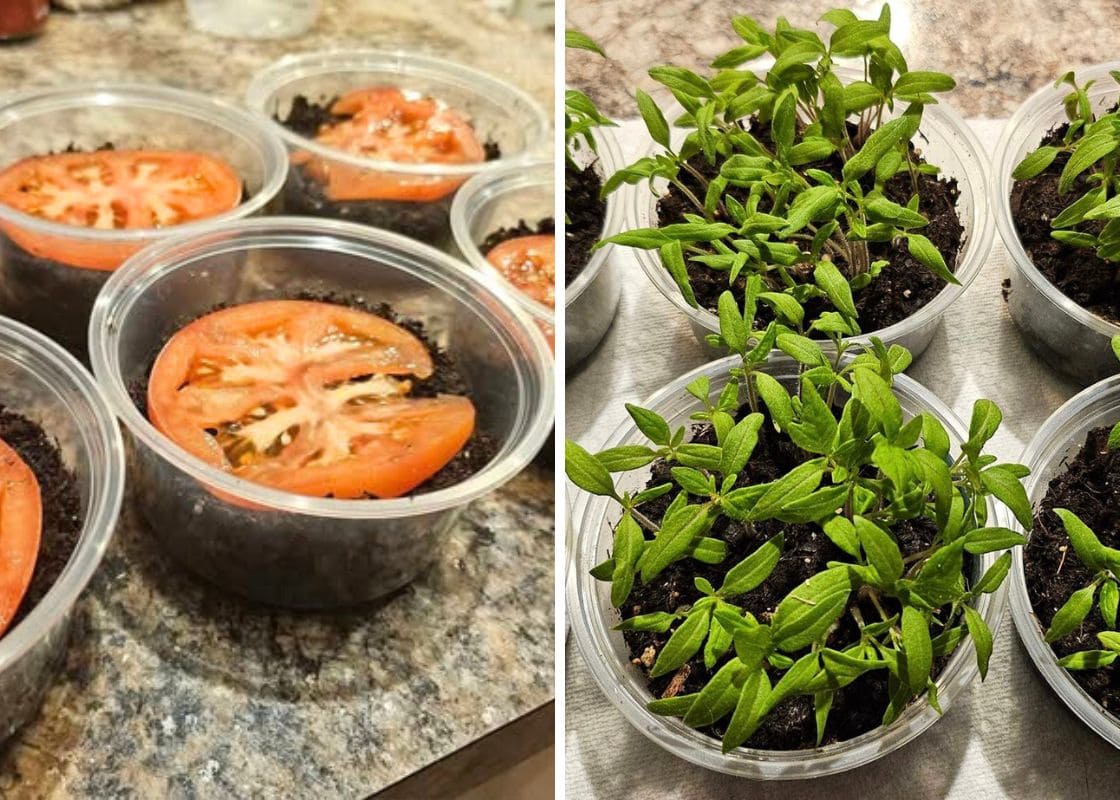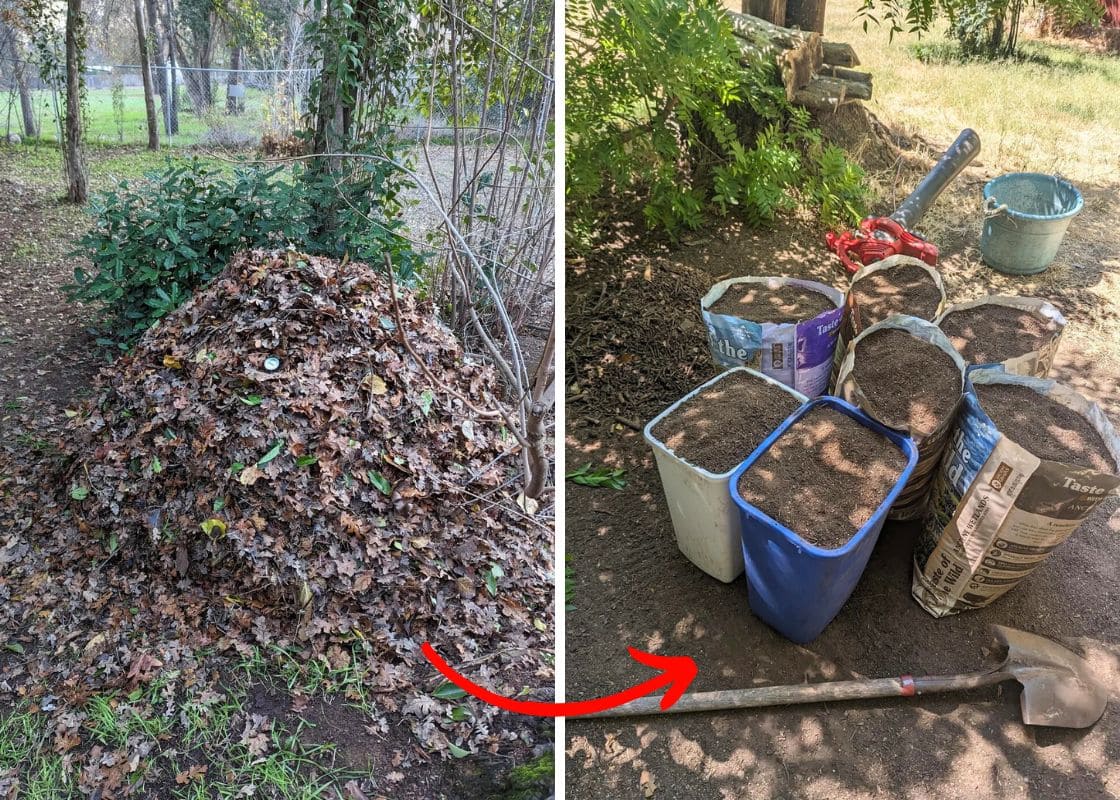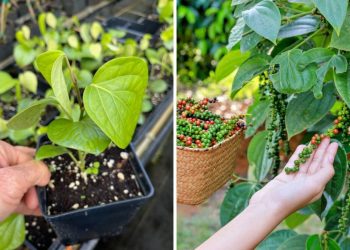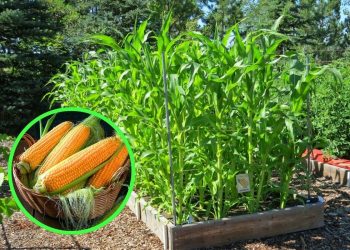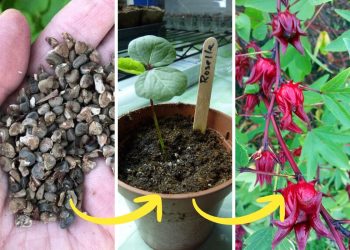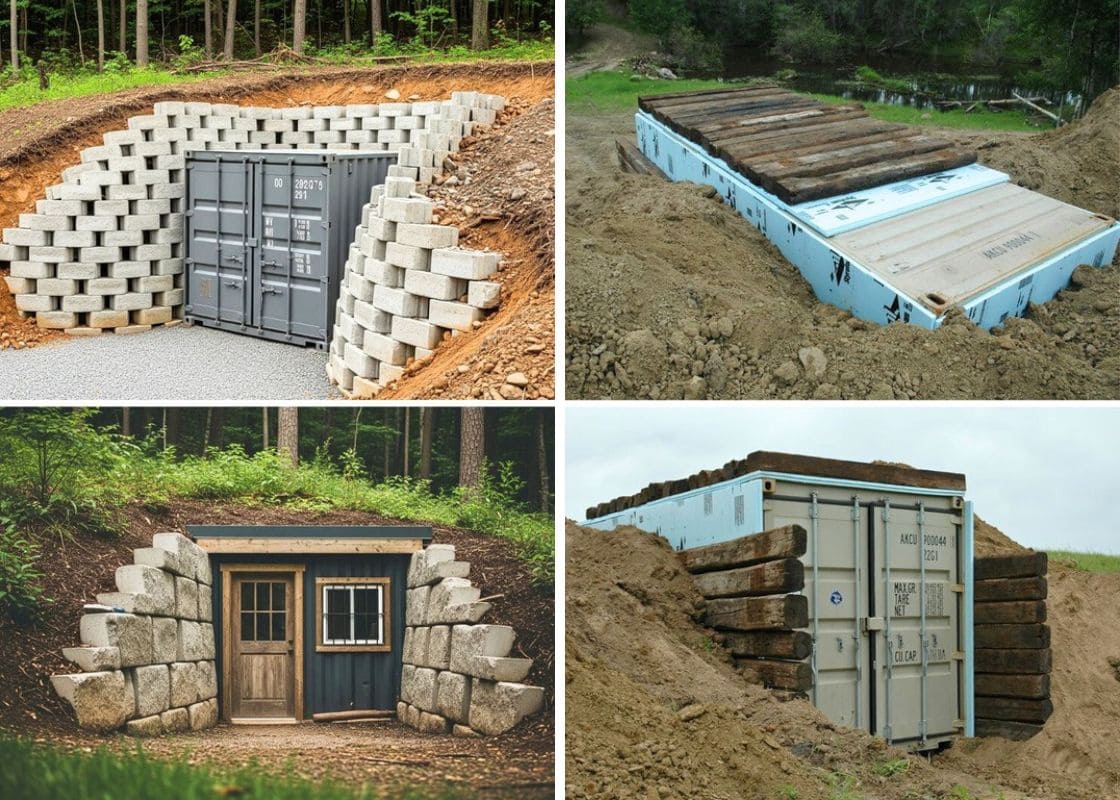I’ve always loved the idea of harvesting bright red berries when growing strawberries. But what I didn’t love was watching them sprawl across the soil, getting muddy, rotting at the base, or ending up covered in leaf mold after a heavy rain. It felt like I was losing half the crop before I ever got the chance to taste it.
So instead of netting or fencing to keep things out, I built a strawberry cage to help my plants grow better from the ground up.
The goal wasn’t protection from pests, it was structure. Something breathable, supportive, and open that would gently guide the plants upward and keep the berries clean, dry, and easy to harvest. And here’s how I built it.
The Idea Behind a Strawberry Cage
Strawberry plants are low growers by nature. They sprawl, crawl and send out runners in every direction. And while that works fine in wild patches, it doesn’t always serve us well in a home garden.
Berries resting directly on the ground tend to rot faster, get splashed with mud, and attract pests. And when leaves are constantly touching damp soil, fungal issues can creep in.
My simple cage design encourages the plants to grow slightly upright, gives them breathing room, and keeps fruit off the dirt, all without requiring pruning or elaborate trellising.
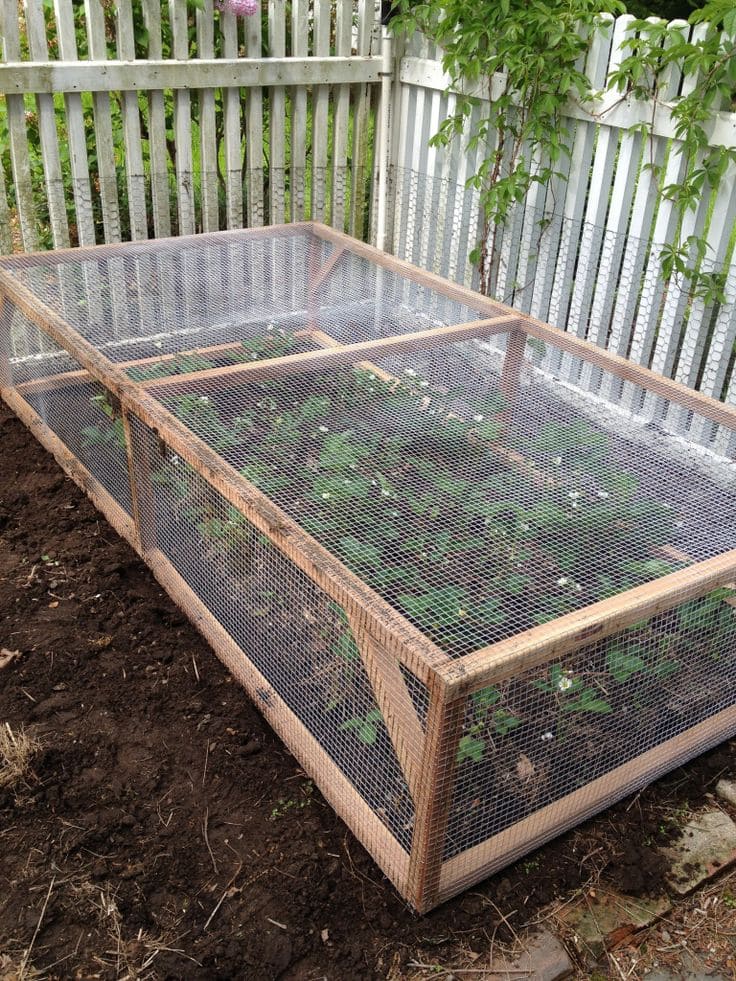
The Design I Used
My strawberry bed measures 6 feet long by 4 feet wide. I built the cage to fit right on top of it, slightly larger so I wouldn’t crush any stems. The frame itself is 6½ feet long, 4½ feet wide, and just 2 feet tall.
That height gives the plants plenty of vertical space to grow and flower freely without crowding. I didn’t want it too tall as I still needed to reach over and pick without lifting the frame constantly.
And with the open top and mesh sides, air and sunlight flow through beautifully, helping prevent mold and mildew on leaves and fruit.
What I Used to Build A Strawberry Cage
The materials were simple and inexpensive, everything came from the local hardware store, and I put the whole thing together in an afternoon.
Materials:
- 4 boards of untreated 2×2 wood, each 6.5 feet long
- 4 boards of 2×2 wood, each 4.5 feet long
- 4 upright corner posts, each 2 feet tall
- Galvanized hardware cloth (with ½ inch openings)
- A box of wood screws
- Heavy-duty staple gun and staples
I built the base and top frames first, connecting them with the vertical posts at each corner. Then I wrapped the entire frame with hardware cloth cutting and folding the mesh carefully so nothing poked out.
I didn’t bother covering the bottom. The frame sits directly on the soil, and the plants grow right up into it.
What This Cage Does for the Strawberries
From the first few weeks, I noticed a difference. The plants looked healthier, less yellowing at the base, fewer leaves lying flat in the mud.
As the berries started to form, they were cleaner, drier, and sat just above the soil instead of on it. That one small change meant fewer rotted fruit and almost no waste.
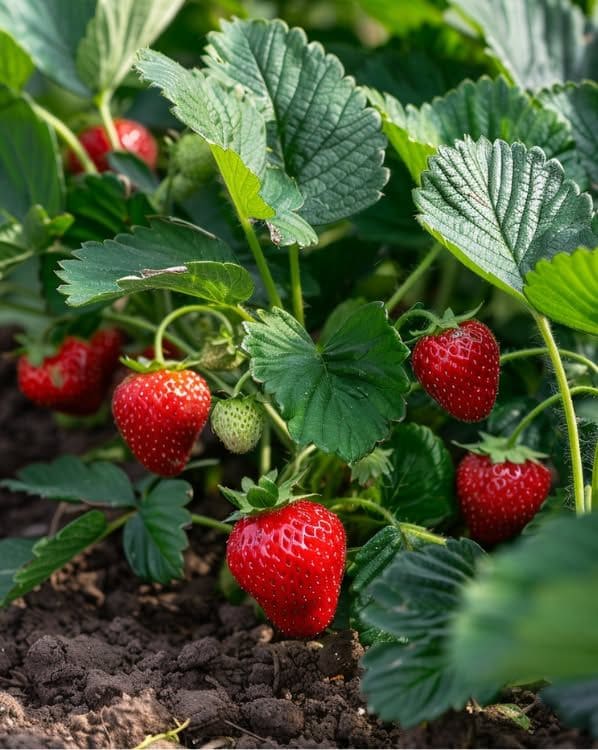
Even after a rainstorm, the berries didn’t get caked in mud. And because the cage kept the plants slightly more contained, it was easier to spot and snip runners, easier to water, and easier to harvest.
Also, it doesn’t stop insects or animals from reaching the plants, and that’s fine. That’s not its job, its job is to give the strawberries the space and air they need to thrive, and it does exactly that.
Small Details That Helped
I added two cross-supports to the top of the frame to keep the mesh from sagging. They also help reinforce the shape of the cage as it rests over the bed. And I stapled the mesh tightly so it wouldn’t flap in the wind or catch leaves.
If I were to build another, I’d consider adding small handles on the sides to lift the cage more easily when it’s time to clean up or prune. But even without them, the frame is light enough to move around as needed.
Final Thoughts
This strawberry cage isn’t about fences or barriers, it’s about better growing. It’s about helping your plants do what they’re already trying to do, just a little more successfully.
And best of all is that it’s simple. If you’re looking for a way to grow more strawberries and enjoy every single one of them, this might be the easiest upgrade you ever make to your garden.
